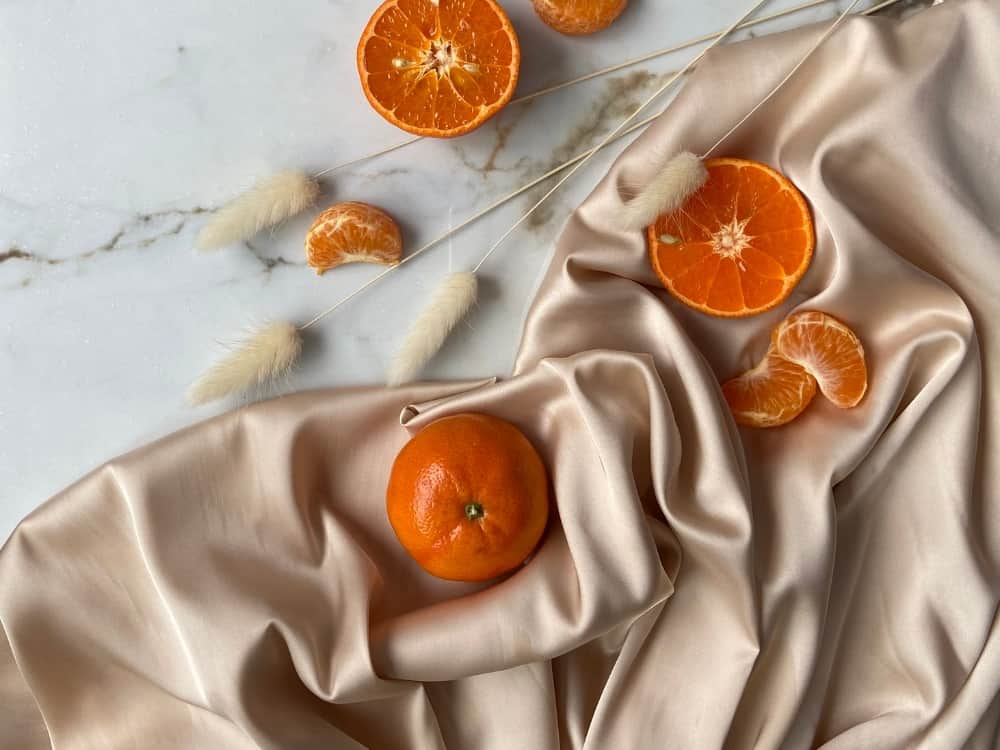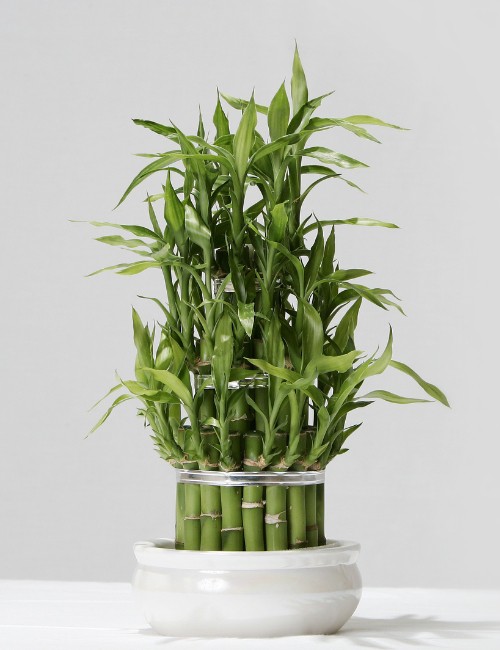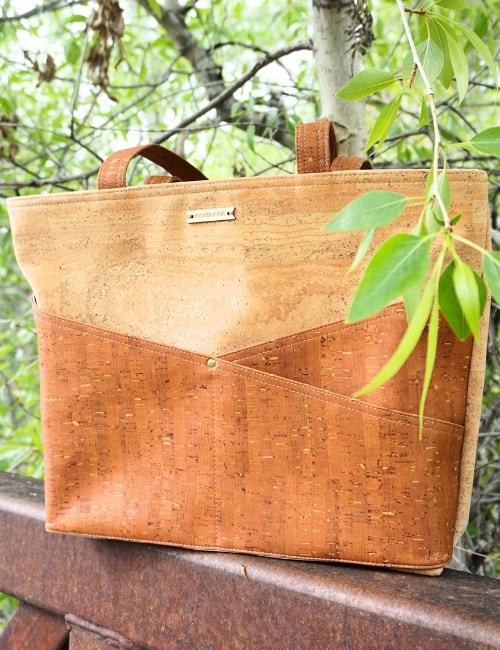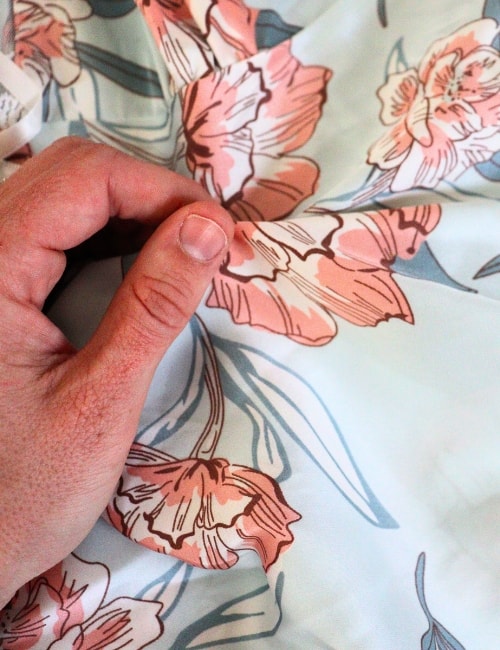
What Is Cupro Fabric And is it Sustainable?
Cupro is touted as the sustainable vegan alternative to silk.
But, what is cupro fabric?
Is it as eco-friendly as they say, or is there a bit of fabric-ation going on?
Cupro is a semi-synthetic fiber made from the cellulose of recycled cotton, though the end result is more akin to silk in texture and drapability.
But regardless of how nice it might feel on our skin, as conscious consumers, we want to know about the whole life cycle of a material before we can label it a sustainable fabric.
If you haven’t yet cottoned on to cupro, don’t worry.
Let’s explore the (cu)pros and cons of this semi-synthetic fiber and find out if it belongs in your sustainable fashion wardrobe. And if you just want to catch highlights, watch our video below.
1. what is cupro Material?
What is cupro?
Cupro fibre is a regenerated cellulose fabric in the rayon family.
While rayon is normally made from wood pulp, cupro is made from cotton waste.
The name cupro is short for cuprammonium rayon which refers to the solution of copper and ammonia that’s used for its production.
Cupro fabric has multiple monikers, including ‘cupra’, ‘Bemberg’ (its brand name), and ‘ammonia silk’ (hmm, not very appealing that one).
Despite appearing to be the new kid on the block, cupro has been around for a long time.You may even find it on a vintage clothing label.
A Swiss scientist first discovered that copper salts and ammonia could produce the fiber in 1857, but it was a French chemist who patented the process in 1890.
What kind of fabric is cupro?
Cupro is known as a semi-synthetic fabric. It’s derived from a natural source (cotton) but the raw material goes through a chemically-intensive process that changes the structure of the cellulose.
Other semi-synthetic fibers include rayon, modal, and lyocell. They’re all made from natural plant material (usually wood pulp) that has been treated with chemical solutions to make a useful fiber.
Sometimes you’ll see cupro fabric referred to as cupro cotton (pointing to its origin) or cupro silk (it feels and acts like silk).
The absence of animal products, combined with its lightweight, silky-smooth feel make cupro a popular vegan silk alternative.
2. what is cupro made of?
We mentioned above that cupro originates from cotton waste.
But what does that mean?
Let’s look at the process in a bit more detail.
Cupro fabric is made from either recycled cotton clothing or cotton linter, the fluffy fiber around the plant’s seeds. Linter fibers are too small to be spun into conventional cotton, so they’re usually thrown out.
The cellulose of the cotton linter is exposed to a mixture of ammonium and copper. These two elements combine with the cellulose to make a new substance.
The mixture is then dropped into caustic soda and extruded through a spinneret in a similar way to viscose.
3. what is cupro fabric used for?
Cupro fabric is used for a whole range of different clothing.
You’ll find it in everything from ethical wedding dresses to sustainable sweatpants.
It’s especially suited to lightweight clothing that’s required to drape nicely. If you think of items that are commonly made from silk (such as blouses), chances are you’ll be able to find a cupro version.
You’ll also find jackets and ethical winter coats made with a satiny cupro lining, and its stretchy, form-fitting properties also make it a popular fabric for eco friendly yoga clothing.
Cupro blends well with other fabrics. It can be mixed with natural fibers like organic cotton or with other semi-synthetic fibers like TENCEL.
4. Is cupro fabric sustainable?
As a semi-synthetic fabric, cupro’s environmental pros and cons are aplenty.
It’s made from cotton waste which sounds great, right?
Well, yes and no.
Cupro is indeed a creative way of transforming a by-product of the cotton plant into usable fabric. It’s also biodegradable, a definite plus.
However, when we look at the processes involved, things get a little murky and in some cases downright dirty.
As with rayon, the raw material needs to go through a chemically-intensive process to create a fiber that can be woven. The chemicals used to create cupro are copper sulfate, ammonia, and caustic soda.
These chemicals pose hazards during the production process, both to textile workers and to the environment in terms of water pollution.
The production of cupro was banned in the United States because the cost of cleaning up the wastewater to meet regulatory levels was too high.
Consequently, cupro is now almost exclusively made in China.
Cupro can be made via a closed-loop process which recycles the chemical solutions several times. This is much more environmentally friendly. However, eventually, the solutions can no longer be reused and need to be disposed of.
Organic vs non-organic cotton
It’s also important to remember that conventionally-grown cotton is an ecological nightmare.
It’s the most pesticide-intensive crop in the world. The pollution caused by the pesticides affects thousands of cotton farmers and their families each year and damages the surrounding environment.
So, whilst it’s a positive that cupro uses a by-product of cotton, it’s still part of an environmentally damaging industry. Making cupro from organically grown cotton would be a much more sustainable option.
So, is cupro a good fabric to be adding to our sustainable wardrobes?
The Made-By Environmental Benchmark for Fibres assesses the environmental impact of the most commonly used fibers in the garment industry. It classes rayon as E, alongside nylon, conventional cotton, and viscose. So in other words, it’s not great.
But we don’t necessarily want to rule it out completely.
It’s important to do a bit of research before you buy cupro clothing. Check the transparency of supply chains to make sure it’s been produced in ethical and regulated conditions, with closed-loop processes.
The bottom line is that there are more sustainable fabric options out there. If you’re looking for a vegan alternative to silk, then consider TENCEL (a Lenzing lyocell product).
There are also some innovative cellulosic fibers being developed from some pretty unusual materials including orange fiber and seaweed material.
5. cupro fabric properties
Is cupro fabric stretchy?
By itself, cupro exhibits a remarkable stretchability that provides comfort and flexibility. But this can vary a lot depending on what other materials it’s mixed with.
Is cupro breathable?
The jury’s still out on this one.
Some claim cupro fabric offers great breathability and temperature regulation, by efficiently absorbing moisture and ensuring the wearer remains comfortable in various climatic conditions. Others are less impressed.
But, it’s a sheer, lightweight fabric commonly used for warm weather clothing, so moderate breathability should be a given.
Does cupro fabric wrinkle?
Cupro’s resistance to wrinkles is moderate; it handles minor creases well, making it a practical option for daily wear and travel. See below for tips on ironing.
How durable is cupro?
Cupro is relatively robust, it does resist shrinkage and maintains its integrity over time. However, like natural fabrics and fibres it doesn’t perform as well as purely synthetic fibres under extreme wear or harsh washing conditions.
6. how to care for cupro fabric
How to wash cupro fabric?
It’s a good idea to follow the manufacturer’s instructions if you don’t want to get into hot water when caring for your fabrics.
The good news is that like conventional rayon (and unlike silk), cupro fabric is easy to care for.
Whereas silk normally needs to be dry cleaned or at least washed by hand, you’ll find cupro can handle a gentle machine wash with mild detergent and cool water. It’s also good practice to turn the item inside out and place it inside a mesh laundry bag.
Having said that, if in doubt, handwash.
You can soak cupro clothing for up to 30 minutes before rinsing under cold running water. Press out the water from the fabric when you’re done. Don’t wring.
To dry, lay the item flat and air dry – don’t use the dryer.
Does cupro shrink?
Yes, cupro fabric will shrink if it’s washed in hot water or put in the dryer. Its helps to know how to read clothing labels for washing and drying.
If cared for properly, cupro clothing will last a long time.
Can you iron cupro fabric?
Steaming cupro is the safest way to remove any wrinkles. Hover your iron over the fabric using the steam setting, or hang your garment in the bathroom while you take a hot shower.
Cupro can be gently ironed on the lowest temperature setting, but be careful. Cupro fabric is highly flammable. It ignites easily at temperatures of 180 degrees. It chars when it burns and leaves a coppery residue.
7. which brands use cupro?
Several sustainable clothing brands have embraced cupro and welcomed it into their (fabric) fold. Here are a few:
- Girlfriend Collective offers a range of tees and vest tops in a cupro and organic cotton mix. For top sustainability marks, the cupro they use is made in a zero-waste, zero-emission facility in Japan and constructed at their SA8000-certified factory in Hanoi.
- On the dressier side of things, brands like Whimsy + Row have dresses and blouses made from a blend of cupro and TENCEL, as well as some 100% cupro pants.
- If you want to hit the sack in something silky, Amour Vert has some dreamy-looking pajamas made from 100% cupro. They also offer several styles of blouses and pants in their ‘Cottonseed Cupro’ collection.
- Boosting the sustainability credentials of cupro by using deadstock fabric, Altar has created some breezy and elegant cupro dresses.
- Outerknown offers 100% cupro women’s shirts and uses cupro fabric for their jacket linings.
Final Thoughts on Cupro Fibres
An important part of sustainable fashion is choosing fabrics that have less of an impact on the environment and have been ethically manufactured with regard to workers’ health and safety, and fair wages.
When deciding which fabrics are sustainable, there’s a lot to consider. Things are rarely black and white, and in some cases, there’s a whole lot of greenwashing going on.
It’s important to look at the practices and processes adopted at each stage of the supply chain.
Cupro is a great example of this. On the one hand, the raw material for creating cupro clothing is a waste product of cotton farming, it’s eco-friendly, and also biodegradable.
On the other hand, the chemical solutions, if not regulated and disposed of properly, pose a hazard for workers and the environment.
All in all, it’s a bit of a controversial fabric.
Supporting brands that use eco-friendly materials is a great way to help the fashion industry clean up its act.
We don’t think cupro is the bee’s knees but it’s a fabric to consider provided it’s been made as sustainably as possible.
If sustainable fabrics get you buzzing, please share this article with your family and friends, and let’s keep the conversations going.




